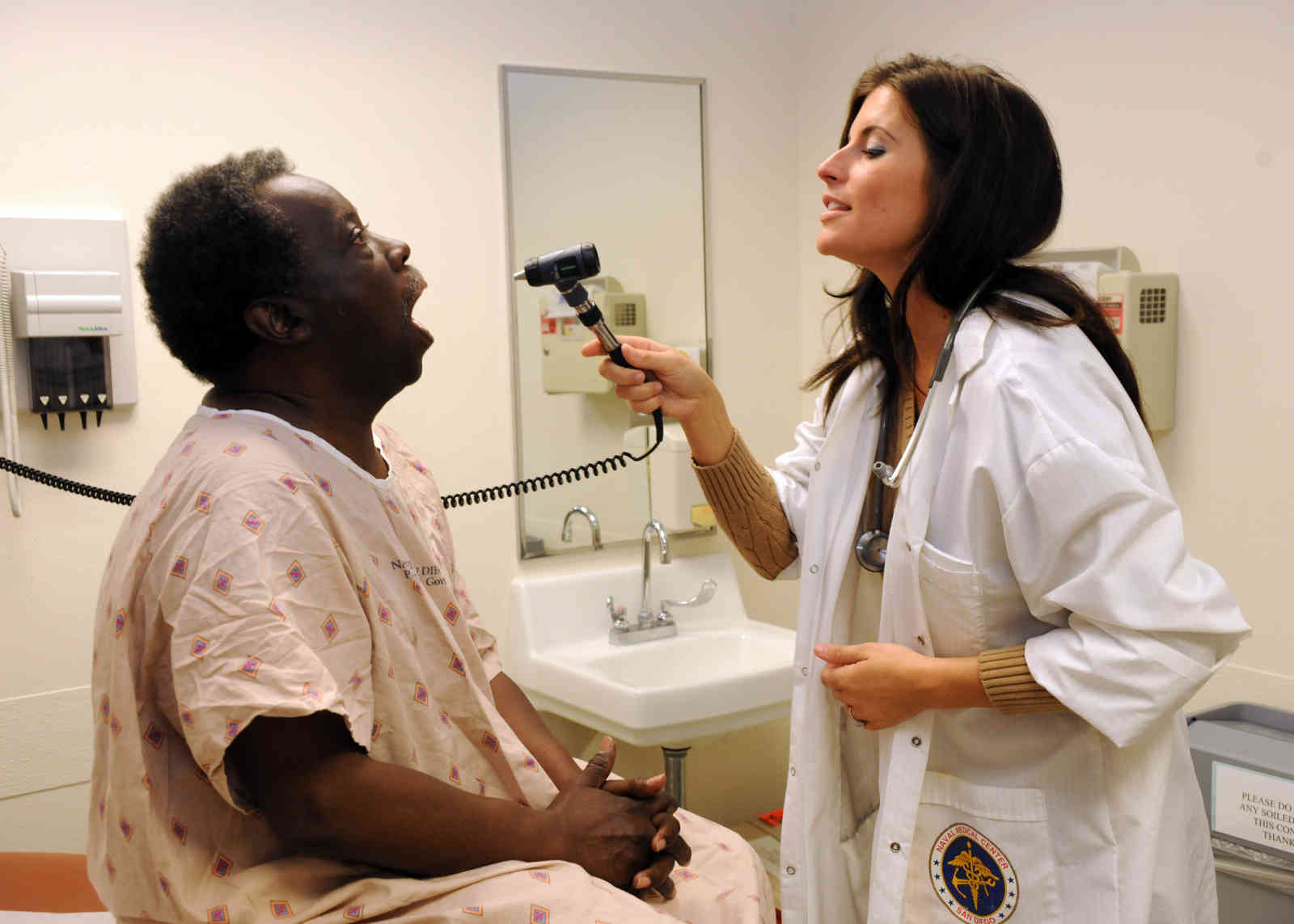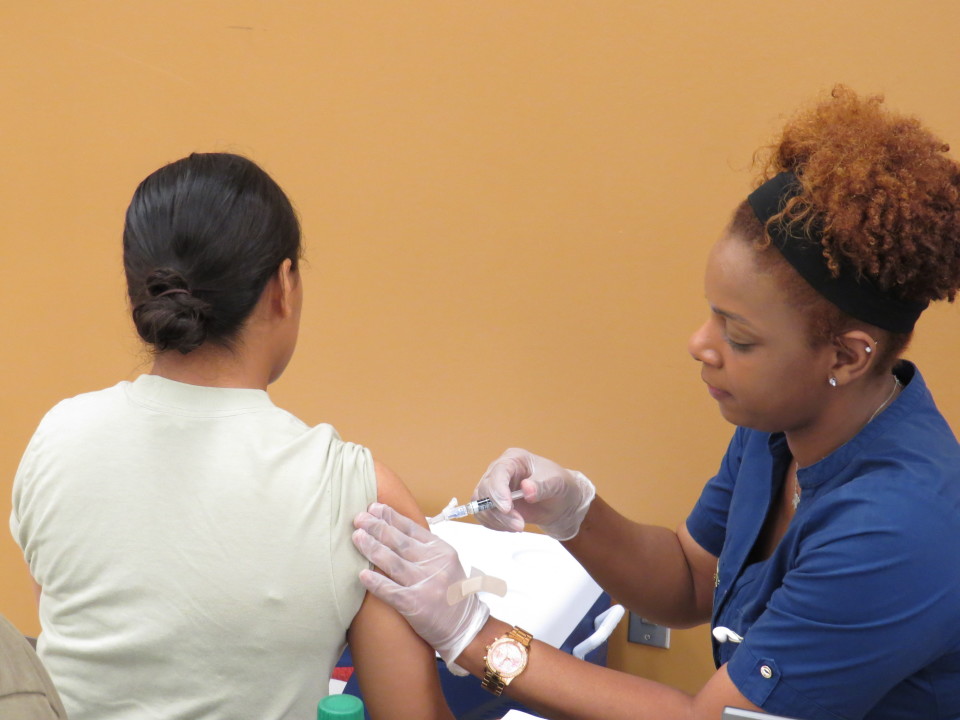Did you know that there is an entire field of medicine devoted to the inner workings of the urinary tract? Or that it’s possible to become a specialist in the human foot?
Medicine is a fast-growing field with a wide array of careers that range from predictably practical to fascinatingly bizarre. And while general practitioners are still in high demand, more specialized jobs are becoming increasingly popular each year.
Interested in working in medicine? Let’s take a look at some of the top careers in this area and why they might be a fit for you.
Doctor (GP)
Also known as physician, medical practitioner, medical doctor, or medical officer.
When people hear “careers in medicine” they tend to picture some kind of doctor—and, to some extent, they’re right. A dazzling number of professions fall under this heading. In fact, there are almost as many different kinds of doctor as there are parts of the human body!
But no matter what their specialty, all doctors have one key goal in mind: to promote, maintain, and restore their patients’ health.
What’s it like being a doctor?
Most medical careers involve some amount of social time, but this is especially true for general practitioners. In the US, they see an average of 20 patients of day, and these tightly-booked appointments are often interspersed with phone calls and meetings with patients, specialists, and other medical staff.
Typical duties include taking medical histories, diagnosing patients, prescribing medication and other treatments, and filling out paperwork. They spend a lot of the day asking probing questions, listening closely, and offering advice. Depending on where they work and what they specialize in, they might run and analyze medical tests, perform surgeries, do hospital rounds, counsel a patient on how to live with a chronic condition, or comfort a family after the loss of a loved one.
The best doctors are…
…efficient and empathetic. Doctors are on their feet and moving fast for most of the day, which means time management skills are an absolute must. But they’re also required to ask very personal questions of their patients, making people skills a huge asset. Finally, because they are sometimes required to make challenging, potentially life-changing decisions under high stress conditions, the best doctors also have calm, analytical minds.
What are the best and worst things about being a doctor?
Not surprisingly, maintaining work-life balance can be challenging in this career. The hours are long and can sometimes creep into evenings and weekends. Many doctors are required to be on-call for 48-hour stretches at a time, which means they have to be “on” and ready to work at a moment’s notice. Perhaps in part because of the stress and demanding hours, a growing number of doctors are dissatisfied in their careers.
But for those who can handle the pressure, this is a rewarding and satisfying profession that offers that chance to make a real difference in people’s lives. It’s also extremely well-paid, with average salaries punching in above $140,000 US.
Becoming a doctor requires time and effort
Doctors deal with life and death situations on a regular basis, so the training required is, understandably, extremely rigourous. Aspiring doctors first have to finish an undergraduate degree—completing courses in biology, chemistry, and other prerequisites—ace the Medical College Admission Test (MCAT), and gain relevant volunteer experience before they can even apply to medical school. Once they’re in, they’ll complete two years of coursework and two years of practical work before graduating. The newly minted grads then move on to a three- to seven-year-long residency program in their specialty of choice, complete a barrage of tests, and finally obtain their license to practice medicine.
Obstetrician-Gynaecologist (Ob-Gyn)
There are far too many medical specialties to cover here, but Obstetrics and Gynaecology is perhaps one of the most rewarding. Doctors in this field spend their time working on all aspects of the female reproductive system, which means they get to be a part of some of the most exciting and challenging years of their patients’ lives.
What is the difference between a gynaecologist, an obstetrician, and an obstetrician-gynaecologist?
Gynaecologists and obstetricians are both experts in female reproduction, but play very different roles in their patients’ well-being. Gynaecologists help identify and treat conditions concerning the vagina, from fertility issues to hormone disorders, sexually transmitted infections to birth control. Obstetricians, on the other hand, work with all aspects of childbirth, caring for their patients from pregnancy until well into the postpartum period. Ob-gyns are trained to handle all of these responsibilities, which means they are able to work with the same patients from puberty through menopause. Some even handle general health queries, helping with issues like asthma, diabetes, and osteoporosis.
What sets obstetrician-gynaecologists apart from other doctors?
Like most doctors, ob-gyns are analytical, empathetic, and rigorous. But the best ob-gyns also have incredibly strong social skills, enabling them to make their patients feel comfortable even in the most awkward or vulnerable situations.
During their training, ob-gyns complete a four-year residency focused on obstetrics and gynaecology, followed, in some cases, by an optional three-year fellowship in an even more specialized field. In addition to obtaining their state medical license, many also choose to get certified as an ob-gyn by the American Board of Medical Specialties after their studies.
What kind of lifestyle does an obstetrician-gynaecologist have?
Full-time ob-gyns typically work between 40 and 60 hours a week, in addition to one or two nights of on-call work per month. But it doesn’t have to be that way. Some ob-gyns work only four days a week; others cap it at two or three. As with GPs, workdays tend to be long and hectic, and the pressure of having to be available for emergencies can take an emotional toll.
For many ob-gyns, assisting with childbirth is both one of the most stressful and rewarding aspects of their job. Those who are able to handle the pressure rate themselves as extremely satisfied with their career (4.5 out of 5). Ob-gyns are also very well compensated, earning an average of about $230,000 in the US.
Radiologist
Another top-ranking career, radiologists use medical imaging techniques such as magnetic resonance imaging (MRI), x-rays, and ultrasounds to diagnose and treat cancers and a variety of other illnesses. Not only are radiologists among the most in demand of all doctors, they’re also among the best paid—with average salaries punching in at well over $400,000 US.
Is radiology a dangerous career?
Just like any doctor, radiologists spend much of their day taking down patients’ medical histories, updating electronic records, and comparing reports. But they also perform complex diagnostic imaging procedures, such as CT, PET, and mammography, putting them in contact with radiation on a regular basis. Although positions in radiology have historically been linked with higher rates of cancer, technological innovations have made it possible to pursue this career with relatively little risk.
Are radiologists more stressed than other doctors?
About half of radiologists report experiencing burnout or depression. This isn’t surprising given their schedules. About a third of radiologists work more than 50 hours a week, and about 10% of them rack in more than 60 hours. Most clock in early—often before 8 am—and usually pick up at least one on-call shift per week.
But despite the hard work, radiologists tend to be pretty happy overall, rating their career satisfaction at 3.8/5 on average. And as we mentioned above, they’re well paid. It’s a tough gig, but a rewarding one: both emotionally and financially.
How do I become a radiologist?
A radiologists’ career path is much like any doctor’s, but includes a couple of additional hurdles. After completing an MD, aspiring radiologists complete both an internship in general medicine and a residency in radiology. Most also supplement this training with a one- to two-year fellowship program in a subspecialty of their choice before finally applying for their license.
Medical Assistant
Luckily, not all careers in medicine require a medical degree. In fact, a majority of the fastest-growing medical jobs can be done without one. Of these, medical assistant probably provides the greatest number of employment opportunities for the least amount of training. This makes it an ideal entry-level job for people interested in the world of medicine, but not interested in completing 11+ years of education.
What is a medical assistant?
Simply put, medical assistants are support workers—the people who work behind the scenes to keep things running smoothly in the medical world. They help doctors, nurses, and other medical staff by scheduling patient appointments, updating medical files, filling out insurance forms, organizing medical charts, and other administrative tasks. They also perform some clinical duties, including managing prescription refills, taking patients’ blood pressure and other vitals, and preparing exam rooms before and after each visit.
An ideal medical assistant....
…is organized and personable. Medical assistants are the face of the clinic, the people who help patients feel welcome, secure, and supported when they come in. But they also play a key organizational role, ensuring that all other medical staff are well-equipped to do their job. The best medical assistants are efficient, empathetic multitaskers.
What does a day in the life of a medical assistant look like?
Medical assistants tend to work in private doctor’s offices, walk-in clinics, or hospitals. In most cases, appointments are booked only 15 minutes apart, making this a very active, fast-paced job. Many medical assistants are responsible for helping two or more doctors at once, upping the pressure even further.
Work schedules are usually predictable, but this depends on the setting. An 8-hour workday is possible, but not necessarily the norm. Some clinics are open until late into the night; others shut their doors promptly at 5 pm.
Are medical assistants well-paid?
Medical assistants are among the lowest-paid healthcare professionals, with salaries averaging about $27,500 US. That said, with enough experience, some medical assistants can make as much as $45,000 a year.
Can I become a medical assistant without a university degree?
Yes! This is probably the most enticing aspect of this career: medical assistants can start working with just a high school diploma under their belt. Of course, post-secondary education is an asset, and many aspiring medical assistants choose to enrol in some kind of formal training to increase their job prospects. If you do decide to go this route, make sure you choose a program that’s been accredited by the Commission on Accreditation of Allied Health Education Programs (CAAHEP) or the Accrediting Bureau of Health Education Schools (ABHES). Usually, you’ll need either a one-year certificate or a two-year associate’s degree to really become a competitive candidate.
Physician Assistant
Also known as doctor assistant, doctor’s assistant, or physician’s assistant.
Often confused with medical assistants, physician assistants play a unique role in the medical system. These hardworking and compassionate individuals work intimately with teams of surgeons or physicians to examine, diagnose, and treat a variety of conditions. They get to know their patients on a one-to-one basis, providing them with treatment plans and educating them on how to maintain their health in the long-term. Essentially, physician assistants fulfil a “doctor-like” role. They can complete most of the tasks of any other practitioner, but only under the supervision of an MD.
What’s the difference between a physician assistant and a medical assistant?
Unlike medical assistant, physician assistant is not an entry-level position. These professionals are licensed health care providers with advanced medical duties. A day in the life of a physician assistant looks a lot more like a practicing physician’s, and a lot less like a receptionist’s.
Not surprisingly, physician assistants go through a lot more training than medical assistants to get to where they are. Typically, candidates complete a bachelor’s degree in science or another related field, then a master’s degree from an accredited PA training program (MA-PA), before finally taking the Physician Assistant National Certifying Examination (PANCE). Only then can they apply for a PA license, a certification that they’ll have to renew every 2 years for the rest of their career.
For all their hard work, physician assistants also get paid more than medical assistants, racking up an average of about $100,000 US per year. It may not be quite the salary of an MD, but it’s a lot cushier than that of a medical assistant.
Is it hard to get hired as a physician assistant?
The Board of Labor Statistics classifies physician assistant as a “Bright Outlook” occupation, with job growth expected to increase by 37% by 2026. This career is no cake walk, but if you put in the effort you’re likely to get hired quickly and paid well.
Nurse Practitioner (NP)
Another “doctor-like” career, the duties of an NP are almost identical to those of an MD. They can examine patients, diagnose illnesses, prescribe medication, and recommend treatment plans—just like physicians do. The key difference between the two careers lies in the question of authority. In most cases, nurse practitioners are required to have a licensed medical doctor sign off on any important patient-related decisions.
What are the perks of becoming a nurse practitioner?
Career opportunities in the medical field are on the rise in general, thanks to our aging Boomer population. But nurse practitioner has one of the best outlooks of all, with job growth expected to increase by 31 percent in the next 10 years—more than twice as fast as for medical practitioners. And while nurse practitioners don’t make quite as much as doctors do, they are well-paid. Salaries average upwards of $100,000 in the US.
Do nurse practitioners have to work overtime?
When it comes to schedules, nurse practitioners have a lot of options. Depending on where they work—in a family practice, a psychiatric-mental health ward, or the geriatric unit at a hospital—they may work days, evenings, or even graveyard shifts. Their average shift length can range anywhere from 8 to 12 hours, though some NPs—especially those who work in emergency rooms—may be on-call for upwards of 24 hours at a time. Overtime is a possible, but not required, part of this profession.
What’s the difference between a nurse and a nurse practitioner?
Nurse practitioners (NPs) are, in fact, registered nurses (RNs)—but they have additional training and carry more responsibility than their colleagues. On a day-to-day basis, this pans out to more autonomy. NPs can see and treat patients without supervision, only referring to a physician or specialist when needed. They can prescribe medications and diagnose acute illnesses; RNs cannot.
Will I have to go to medical school to become a nurse practitioner?
While an MD isn’t required to become a nurse practitioner, it might as well be. NPs first become registered nurses—completing a Bachelor’s in Nursing Science (BSN) and a passing licensing exam—then work for several years to gain experience. Next, they enrol in either a Master’s of Nursing Science (MSN) or a “bridge” program (RN-to-MSN, for nurses who don’t have a BSN). Although not required, more and more nurse practitioners are choosing to complete a Doctor of Nursing Practice (DNP) degree before entering the workforce. No matter what their level of education, all NPs are required to obtain a license to practice. Many choose to specialize even further by pursuing additional training after their degree.
Chiropractor (DC)
Aching back? If so, you’re not alone. Almost 80 percent of adults will experience lower back pain at some point in their lives, which is why chiropractors play such an essential role in the health care system. Chiropractors help patients deal with problems in their musculoskeletal systems: including the muscles, ligaments, nerves, bones, and tendons. Although they may assist with pain in any part of the body, the bulk of their work tends to be focused on the back and neck.
How do chiropractors help?
The basic theory behind chiropractic treatment is that people can heal from pain and injury without surgery or medication, as long as the body’s musculoskeletal structure is properly aligned. A chiropractor’s primary goal is to facilitate that alignment through manual manipulation, spinal adjustments, and other alternative treatments.
But chiropractors also complete some of the same duties you’d expect from any doctor. They take patients’ medical histories, perform physical exams, and may even use diagnostic imaging or lab testing to determine the appropriate course of treatment. They also offer advice on sleep, nutrition, exercise, and other lifestyle factors to help patients recover more quickly and prevent future injuries.
Are chiropractors well-paid?
Perhaps because back pain is so common, chiropractor is considered one of the top 25 most secure professions around. It isn’t as lucrative as some medical careers, with an average salary of about $80,000 US. But many chiropractic positions also include bonuses, commissions, or profit-sharing options, making this line of work just a little more enticing.
Is a chiropractor a doctor?
Although chiropractors are technically doctors, they aren’t medical doctors. To enter this profession, candidates first obtain a Bachelor’s in Science or a related field, completing prerequisite courses in subjects like chemistry, biology, communication, and sociology. Next, they attend chiropractic college—a four year graduate program culminating in a Doctor of Chiropractic (DC)—and complete a certification exam to finally become licensed. Some go on to specialize further after their degree, completing additional training in sports, geriatrics, paediatrics, or another chiropractic specialization.
Although the career trajectory of a chiropractor resembles that of a doctor’s, the day-to-day reality of these two positions couldn’t be more different. Whereas most MDs tend to lead hectic, stressful lives, CDs usually have more relaxed schedules. More than half own their own practice, allowing them to work where, when, and with whomever they want. And while chiropractic patients are usually in a state of pain or discomfort when they come to the clinic, they tend to be much less distressed than those found in hospitals and other medical settings.










